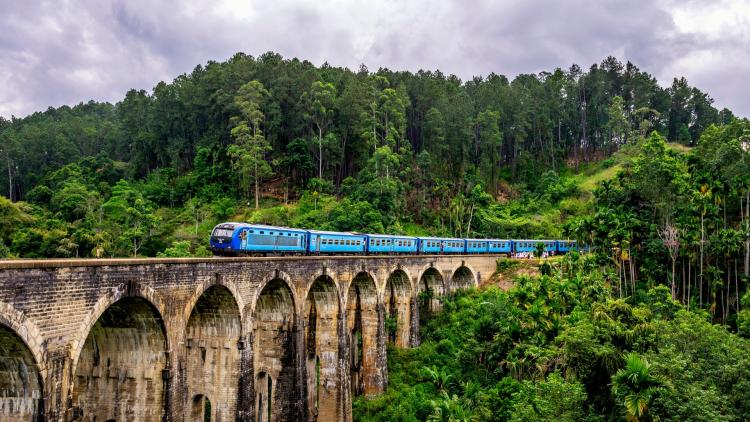Readings in Prakrit

Key information
- Start date
- End date
- Year of study
- Year 2 or Year 3
- Duration
- Term 2
- Module code
- 155901324
- FHEQ Level
- 5
- Credits
- 15
- Department
- South Asia Section
Module overview
The continued teaching of Prakrit at SOAS in 2019/20 is made possible thanks to the generosity of the Digambar Jain Mahasabha, New Delhi, and all well-wishers who have also generous supported the 2019 crowdfunding call 'Save Prakrit at SOAS' of the Centre of Jain Studies.
Prerequisites
Familiarity with the basic features of Prakrit, especially as demonstrated by satisfactory attendance and performance in the "Introduction to Prakrit" (15 credit module, for which this module may serve as a continuation), or with those of another classical Indian language (Sanskrit, Pali).
Objectives and learning outcomes of the module
At the end of this module a student should . . .
- be able to read, analyse and translate texts in Prakrit to an advanced level using relevant tools
- be familiar with the special problems (dialectal, metrical, etc) involved in working with the various genres of Prakrit literature
- be aware of the important contribution of the Prakrit literary, historical and religious documents to classical Indian culture
Workload
This module is taught over 11 weeks with two hours classroom contact per week.
Scope and syllabus
Prakrit is an important language of Ancient India in literary texts (dramas, anthologies of lyrical poetry, etc.), in inscriptions from the earliest times of writing in India (Asoka, etc.), and in the vast canonical and narrative literature of the Jains.
The syllabus of the module will include selected stanzas from Hala's Sattasai as well as excerpts from Classical Indian dramas, exemplifying its use of different Prakrits in prose and poetry; selected Prakrit inscriptions in Kharosthi and Brahmi scripts, exemplifying the earliest Buddhist, Jain, and Hindu historical records of India; and selected passages from important Jaina texts, such as the Ayaranga, Kalpasutra, etc. from the Svetambara canon, and/or Puspadanta's Mahapurana from the Digambara texts. (Xeroxed copies will be provided.)
Special emphasis may be put on one of these text categories according to the specific interest of the individual students / student groups (including MA and MPhil/PhD students from other faculties).
Familiarity with the Prakrit languages and its texts, acquired through practice, will enhance the understanding of Prakrit components of the classical Indian tradition (e.g. classical Sanskrit dramas, Indian aesthetic theory, etc.) and increase the accessibility of Middle-Indic historical documents (inscriptions, etc.).
Method of assessment
- One 3,000 word commented translation of a selected text passage due term 3 (100%)
- The exact assessment deadline dates are published on the relevant module Moodle/BLE page
Suggested reading
A downloadable Word version of the Reading List is available here.
A. General:
- A.C. Woolner: Introduction to Prakrit, 2nd ed. 1928, repr. Delhi 1986.
- Katre, S.M: Prakrit languages and their contribution to Indian culture. Bombay: Bharatiya Vidya Bhavan, 1945.
- Jain, Banarsi Das: Ardha-Magadhi Reader. Lahore 1923.
- Pischel, R.: Comparative grammar of the Prakrit languages, translated 2nd ed., Delhi 1965.
- Sheth, Hargovind Das T. : Paia-sadda-mahannavo: A comprehensive Prakrit-Hindi dictionary, with Sanskrit equivalents, quotations and complete references. Delhi: Motilal Banarsidas 1986 (first publ. 1928).
- M. Winternitz: "Jaina Literature" in: A History of Indian Literature. Vol 2, Calcutta 1930, p. 429-595.
- Ratnachandraji, Shatadhvani: An illustrated Ardha-Magadhi dictionary, literary, philosophic and scientific: with Sanskrit, Gujarati, Hindi and English equivalents, references to the texts & copious quotations, with an introduction by A. C. Woolner. 5 vols. Tokyo : Meicho-fukyu-kai, 1977. (Reprint of the 1923-38 edition.)
B. Texts and translations:
- A. Weber: Ueber das Saptaçatakam des Hâla: ein Beitrag zur Kenntniss des Prâkrit. Leipzig: Brockhaus 1870. [Text edition of Hala's Sattasai]
- Saptasatisara, with Bhavadipika of Vema Bhupala, along with the Chappannaya-Gahao, ed. by A. N. Upadhye, Kolhapur 1970.
- Bühler, G.: Indian Palaeography ...., ed. by J.F. Fleet.
- Dani, A.H.: Indian Palaeography. Oxford 1963.
- Salomon, R.: Indian epigraphy: a guide to the study of inscriptions in Sanskrit, Prakrit, and the other Indo-Aryan languages. New York 1998.
- Mehendale, M. A.: Historical grammar of inscriptional Prakrits, Poona 1948.
- Hultzsch, E.: Inscriptions of Asoka. Oxford 1925.
- Schneider, U.: Die großen Felsenedikte Asokas.Wiesbaden: Harrassowitz 1978. [Text edition.]
- Sircar, D,C.: Select inscriptions, vol. I. 2nd edition, Calcutta 1965.
- The Ayâranga sutta of the Svetâmbara Jains / edited by Hermann Jacobi. Part 1, Text. London : Pali text Society, 1882.
- The Kalpasûtra / of Bhadrabâhu; edited with an introduction, notes and a Prâkrit-Sanskrit glossary by Hermann Jacobi. Leipzig : In Commission bei F.A. Brockhaus, 1879.
- Jaina Sutras / translated from the Prakrit by Hermann Jacobi. 2 vols., Delhi : Sri Satguru Publications, 2003. In Prakrit and English. Vol. 1. The Acarangasutra.
The Kalpasutra. - The Mahapurana or Tisatthimahapurisagunalamkara of Puspadanta / ed. by P.L.Vaidya. 3 vols. Bombay : Manikchand Digambara Jaina Granthamala, 1937.
- Hemacandra, 'Parisistaparvan': The lives of the Jain Elders, translated with an introduction and notes by R.C.C. Fynes. Oxford University Press, 1998.
Convenor
Disclaimer
Important notice regarding changes to programmes and modules
